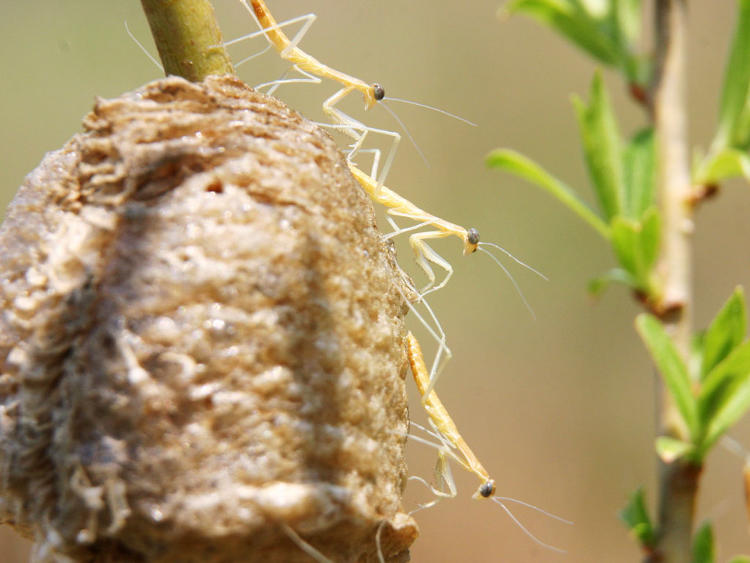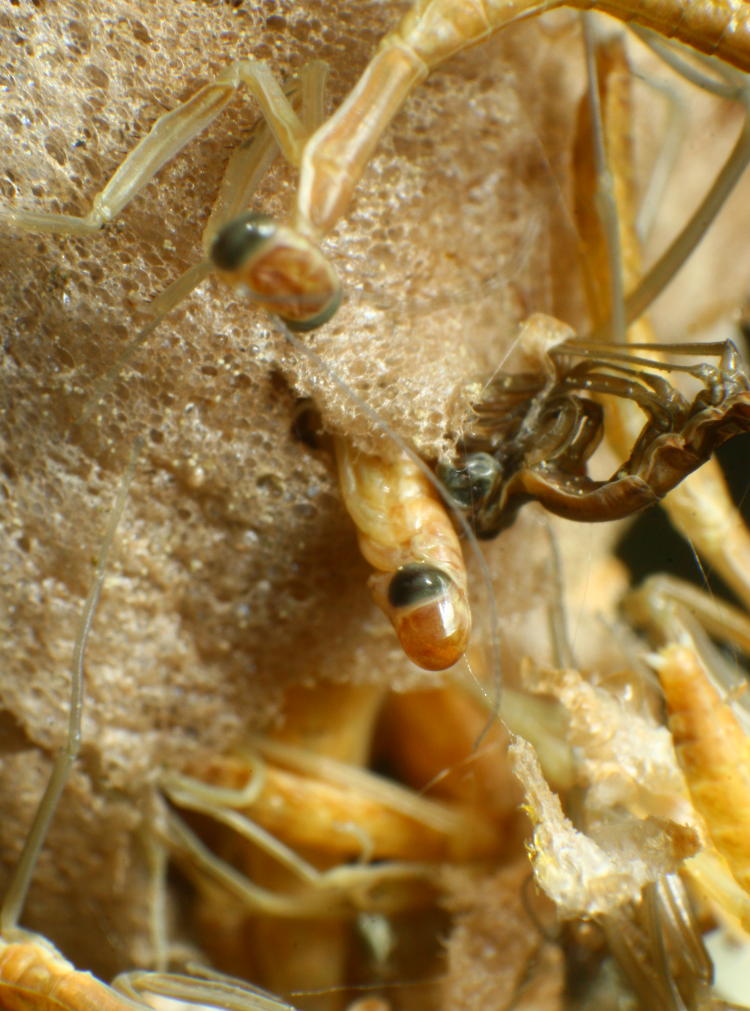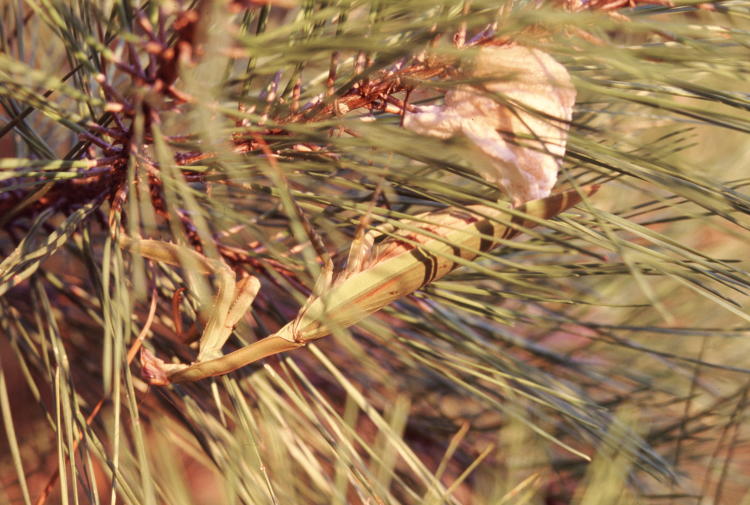
This image comes from 2011, when I happened upon the egg sac/ootheca of a Chinese mantis (Tenodera sinensis) sporting the newly-hatched young in a local park. The darkness of their eyes, I was later to determine, showed that they’d hatched out within the past several hours, and their proximity to the egg sac indicated that it was probably within the past 3 or so. I considered myself quite lucky to get these, especially this pose, but vowed that I would be doing better as soon as I could.
Mantids only have one hatching season per year, at least in this climate, and it would take knowing where the egg sacs were ahead of time to closely observe them in the spring. Over a period of years, I learned that they typically waited for sunny, warm days and emerged in the morning, though apparently not too early, but beyond that it was a tossup – I’ve seen them hatching in March through May, so even pinning down a particular timeframe to begin close observations was tricky, because even I have a life. I made it a point to collect egg sacs when I could, as well as noting the locations of any found on the property, to increase the chances of catching this as it occurred. And for real detail, this would take a serious macro lens with a tripod and flash, so access would have to be reasonably ideal.
Funny, then, that some of the best shots obtained were from another egg case that I stumbled upon as it was in the process of hatching, right off the back fence, and not one of the many that I’d collected or marked.

It took nine years, this image having been captured in 2020, but by that time I had video capabilities and could do this right. I was also remarkably lucky in that this ootheca was a little below eye level in a decent opening on an azalea bush, making it easy to place the tripod and not requiring video lights; in other cases, like the one from this past summer, the angle for a good view would mean working flat on the ground and moving other branches out of the way, as well as making supplemental light mandatory. All that, while trying not to disturb the newborns.
Not so lucky were a lot of the mantid’s siblings, at least one seen here: something, perhaps wind gusts, had caused the demise of many immediately after emergence, and their carcasses were tangled around the egg case.
Notable differences between the two situations? Not a whole lot, equipment-wise. The earlier image was with the Sigma 24-135 with an extension tube for macro work, before I made an adapter to use the Mamiya 80mm macro, and shot freehand. The latter was with the reversed (failed) Sigma 28-105, possibly with an extension, as well as the Sunpak macro rig, and a tripod. Being home helped, because I had access to everything I own rather than just what I was carrying at the time. Overall, however, I credit the resolve to capture specifically this subject, which meant that I was prepared to take full advantage when I found them.
All that said, I figure I should tackle another aspect of my resolve to get specific images, since it’s directly related: the actual production of the ootheca.

This image dates from 1999, shot on slide film, and represents the first time that I captured a mantis actually producing the egg sac. It was mostly finished by this time, and it made me vow to get this in better detail, preferably from the start and certainly with a better view. So how did that resolve turn out?
.
.
.
It didn’t. In 23 years, with careful observation of the mantids that I purposefully established in the yard, as well as being out in other likely locations at likely times, I haven’t seen this happening, or even caught it soon afterwards – not once. Draw your own conclusions from that as you may, but I wanted to make it clear that resolve isn’t always enough.




















































